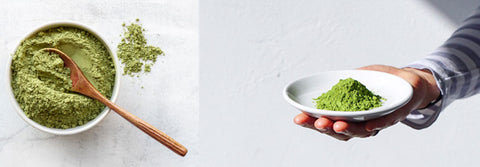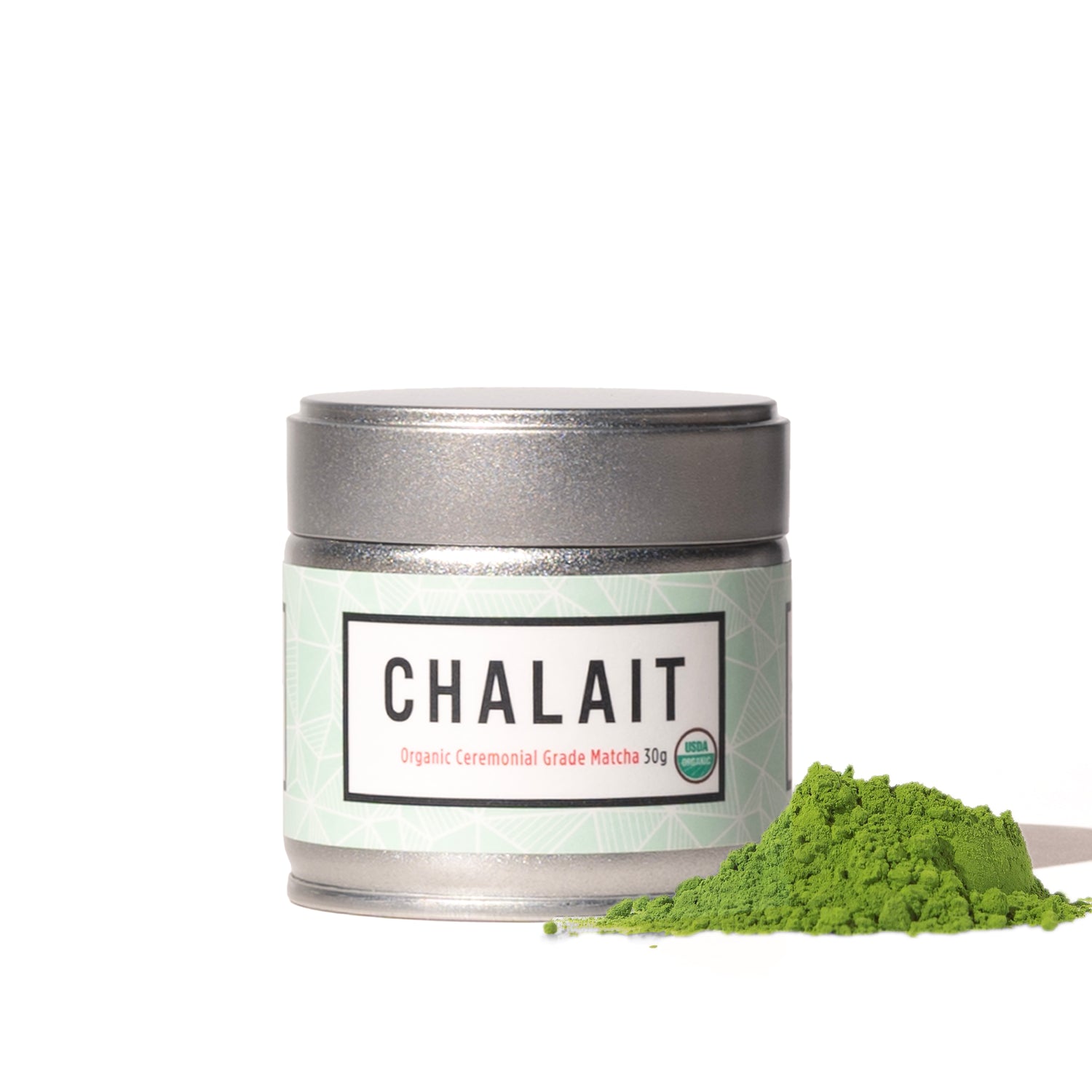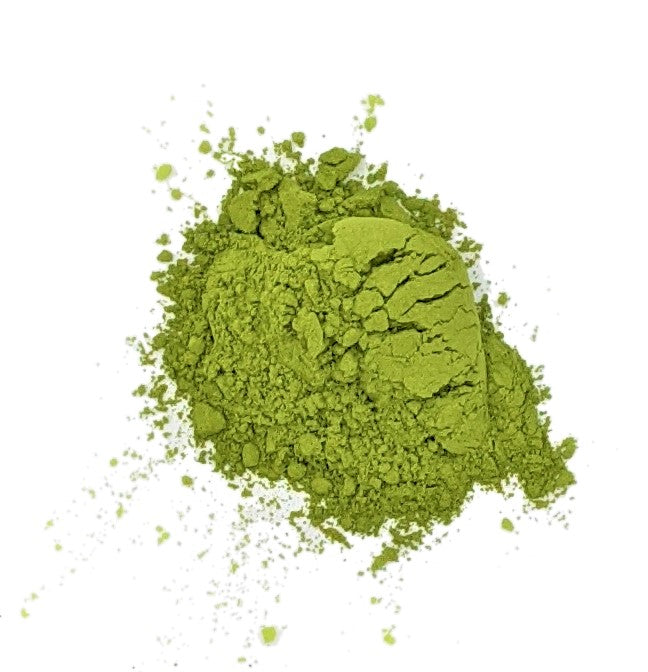You may have noticed a stark difference in price between different Matcha brands. Looking closely, you may then realize this is because they are from two different countries. One, from China and the other, Japan. So what is the difference between the two - and why is there such a disparity in prices?
But first, what is Matcha Tea?
Matcha translated means powdered tea, with Ma meaning powder and Cha means tea in English. Both Matcha tea and also black tea comes from the same plant, the Camelia Sinensis. The difference between the two comes down to the farming process. Green tea plants grow in the shade for 3 to 4 weeks before harvest. Shade growing is a labour intensive process which elicits an increase to the amino acid L-theanine production. This process also decreases the bitter flavour, bringing out the natural sweetness in the leaves.
Originating in China, Matcha has been a part of the Japanese culture for over 800 years. It is the undisputed truth that the Japanese perfected the Matcha cultivation process.
Japanese Matcha Vs Chinese Matcha
Visual differences

The difference between the Japanese and Chinese matcha is noticeable. The Japanese matcha has a vibrant, emerald green presentation. In Japan the matcha leaves grow in the shade in the last few weeks before harvesting; this laborious process increases the chlorophyll within the leaf, giving it it's brilliant colour. Chinese Matcha, on the other hand, has a duller hue with tones of brown and yellow.
Texture
Japanese manufacturing provides a uniform texture for the powders. The fine powder mixes easily with a delicate froth and to drink the Matcha has a smooth, silky finish. Much Chinese processing is still by hand, which can result in an inconsistent texture or larger particle size. Many Chinese Matcha powders do not froth and leave a sandy texture in your palate.
Taste Profile of Japanese Matcha:
Genuine Matcha has a unique flavour profile. The Japanese take their soil very seriously, fertilizing the soil to ensure the plants provide an abundance of umami and nutrients. The shading also plays a significant role in the flavour profile. For top grade Matcha, the plants grow in near darkness in the weeks leading up to their harvest. This results in a sweeter taste, with very little to no bitterness. Once harvesting takes place, the leaves are steamed to preserve the flavour and nutrients and dried using heat blowers.
Taste profile is sweet yet savour taste with little to no bitterness
Taste Profile of Chinese Matcha:
Unlike Japanese Matcha, Chinese Matcha is typically not grown in the shade. This means that the unique Umami taste is very subtle or non-existent giving way to an earthy flavour. Tannins develop in Chinese Matcha, this is a result of not growing in the shade; this results in bitterness to your Matcha beverage.
Taste profile is brighter, with an earthier flavour with natural bitterness.
Nutritional differences
The contrasts in farming techniques give Japanese Matcha a nutritional advantage. The shading process ensures chlorophyll and other nutrients are concentrated in the leaves. This includes an abundance of the natural antioxidant polyphenols.
Chinese Matcha does still contain many of the same qualities, just not in the same quantity.
Price differences
You will notice a significant price difference between Japanese and Chinese Matcha. The price of Japanese Matcha reflects the laborious growth process along with the higher quality end product.
Quality
As the popularity of Matcha continues to grow in western cultures, so too makes the demand. As with any product with such a high appeal, Chinese manufacturers find ways to take advantage and capitalize on this. Mass production inevitably, in many cases, compromises the health benefits of the actual Matcha. In recent times, there have been concerns raised regarding the farming techniques used in Chinese Tea plantations. This includes the illegal use of pesticides banned for use on tea plants.
Why compare Japanese and Chinese Matcha?
This vibrant green powder is prized for its health benefits and potent antioxidant value; making it popular for not only its taste qualities but also its medicinal benefits. Studies continue to show its potential in not only the maintenance of a healthy body but also in aiding in the cure of multiple illnesses and diseases. The high yield of antioxidants and anti-inflammatory properties make it
Now let us not forget, we also love Matcha for its taste. For this reason alone, the old saying of you get what you pay for stands true.



2 comments
Thanks for this great article! I noticed the large price differences between Chinese and Japanese Matcha, so I decided to Google the difference and your article confirmed my suspicions.
I didn’t know about these differences in cultivation and processing so thank you for that information. Some friends and I have been getting hooked on “match lattes” unsweetened done by Manner Coffee in Shanghai. The matcha has a very deep green hue and is quite “grassy” tasting but I am going to ask where the matcha powder they use comes from